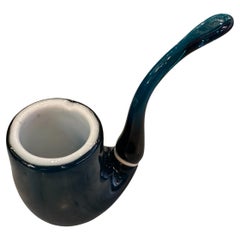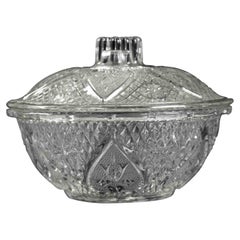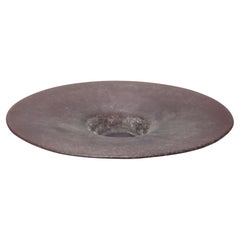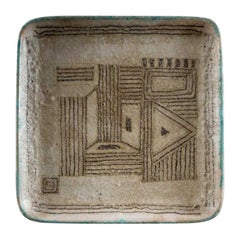Italian Centerpieces
1990s Italian Centerpieces
Other
1950s Mid-Century Modern Vintage Italian Centerpieces
Murano Glass
1970s Vintage Italian Centerpieces
Glass
1960s Mid-Century Modern Vintage Italian Centerpieces
Murano Glass, Sommerso
1980s Post-Modern Vintage Italian Centerpieces
Murano Glass
Mid-20th Century Mid-Century Modern Italian Centerpieces
1960s Mid-Century Modern Vintage Italian Centerpieces
Chrome
2010s Minimalist Italian Centerpieces
Resin, Fiberglass, Paint
Late 19th Century Antique Italian Centerpieces
Marble
2010s Modern Italian Centerpieces
Ceramic
1930s Vintage Italian Centerpieces
Sterling Silver
Mid-20th Century Mid-Century Modern Italian Centerpieces
Glass, Art Glass, Blown Glass, Murano Glass
20th Century Mid-Century Modern Italian Centerpieces
Art Glass, Murano Glass
21st Century and Contemporary Organic Modern Italian Centerpieces
Silver
21st Century and Contemporary Post-Modern Italian Centerpieces
Murrine, Art Glass, Murano Glass
Mid-20th Century Art Deco Italian Centerpieces
Glass, Art Glass, Blown Glass, Murano Glass
21st Century and Contemporary Baroque Italian Centerpieces
Silver
Mid-20th Century Mid-Century Modern Italian Centerpieces
Murano Glass
21st Century and Contemporary Modern Italian Centerpieces
Murano Glass
1980s Mid-Century Modern Vintage Italian Centerpieces
Art Glass, Blown Glass, Murano Glass
21st Century and Contemporary Organic Modern Italian Centerpieces
Gold
Mid-20th Century Mid-Century Modern Italian Centerpieces
Blown Glass, Murano Glass
Late 20th Century Art Deco Italian Centerpieces
Sterling Silver
1930s Art Deco Vintage Italian Centerpieces
Murano Glass
2010s Organic Modern Italian Centerpieces
Art Glass, Blown Glass, Murano Glass
1980s Mid-Century Modern Vintage Italian Centerpieces
Art Glass, Blown Glass, Murano Glass
20th Century Mid-Century Modern Italian Centerpieces
Art Glass, Murano Glass
1970s Mid-Century Modern Vintage Italian Centerpieces
Crystal
1890s Mid-Century Modern Antique Italian Centerpieces
Blown Glass
1970s Mid-Century Modern Vintage Italian Centerpieces
Ceramic
21st Century and Contemporary Modern Italian Centerpieces
Ceramic
1970s Post-Modern Vintage Italian Centerpieces
Metal
21st Century and Contemporary Other Italian Centerpieces
Art Glass
21st Century and Contemporary Modern Italian Centerpieces
Ceramic, Majolica
1950s Mid-Century Modern Vintage Italian Centerpieces
1930s Art Deco Vintage Italian Centerpieces
Silver, Gold
21st Century and Contemporary Modern Italian Centerpieces
Gold Plate
1930s Vintage Italian Centerpieces
Art Glass
19th Century Classical Roman Antique Italian Centerpieces
Alabaster, Bronze, Ormolu
1970s Mid-Century Modern Vintage Italian Centerpieces
Glass
21st Century and Contemporary Art Nouveau Italian Centerpieces
Crystal, Bronze
21st Century and Contemporary Moorish Italian Centerpieces
Gold Plate
1960s Mid-Century Modern Vintage Italian Centerpieces
Ceramic
Early 2000s Post-Modern Italian Centerpieces
Blown Glass
1940s Art Deco Vintage Italian Centerpieces
Murano Glass
1950s Art Nouveau Vintage Italian Centerpieces
Crystal, Brass
Mid-20th Century Mid-Century Modern Italian Centerpieces
Brass
1930s Art Deco Vintage Italian Centerpieces
Murano Glass
21st Century and Contemporary Louis XVI Italian Centerpieces
Crystal, Bronze
1930s Mid-Century Modern Vintage Italian Centerpieces
Ceramic
1960s Mid-Century Modern Vintage Italian Centerpieces
Earthenware
1930s Mid-Century Modern Vintage Italian Centerpieces
Murano Glass
21st Century and Contemporary Modern Italian Centerpieces
Gold Plate
Late 20th Century Mid-Century Modern Italian Centerpieces
Brass, Chrome
Mid-20th Century Renaissance Revival Italian Centerpieces
Cut Glass
21st Century and Contemporary Modern Italian Centerpieces
Platinum
1950s Art Nouveau Vintage Italian Centerpieces
Crystal, Gold, Bronze
19th Century Antique Italian Centerpieces
Porcelain
20th Century Mid-Century Modern Italian Centerpieces
Art Glass, Blown Glass, Murano Glass, Glass, Sommerso
1970s Mid-Century Modern Vintage Italian Centerpieces
Silver Plate





